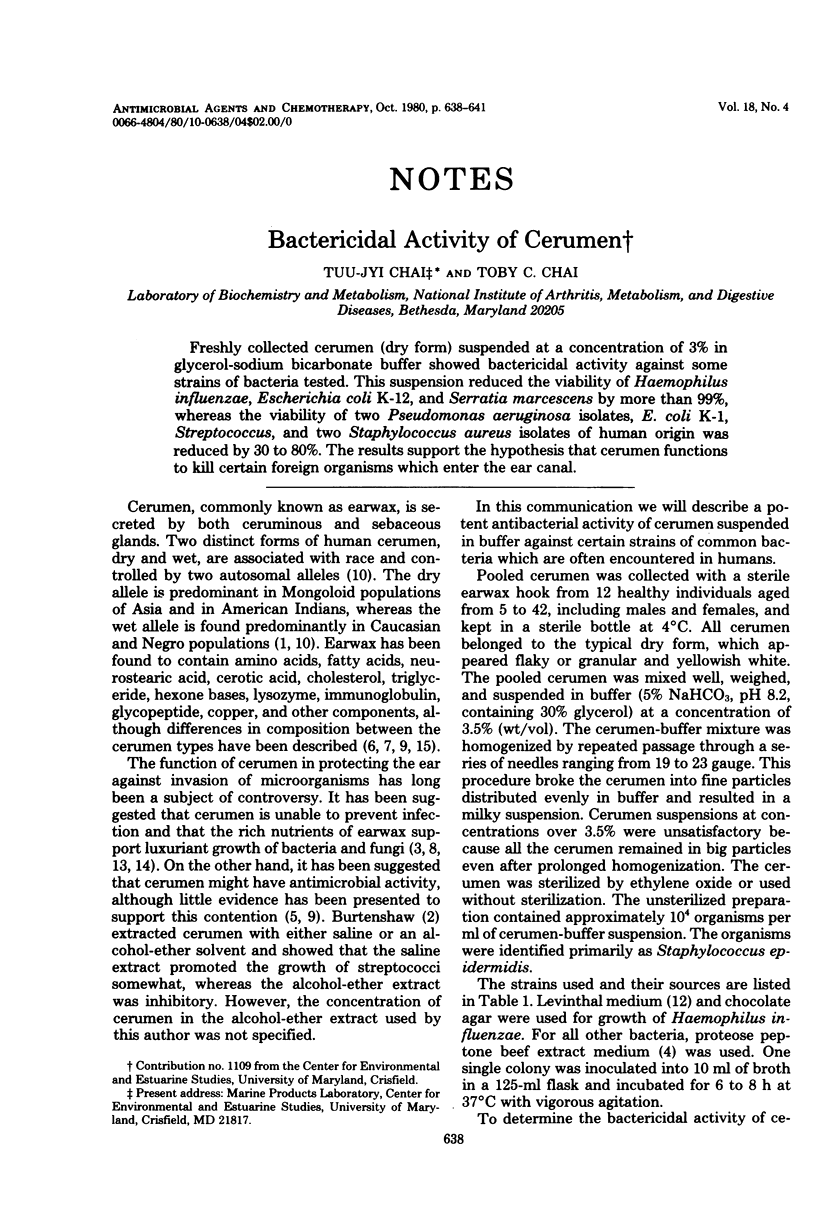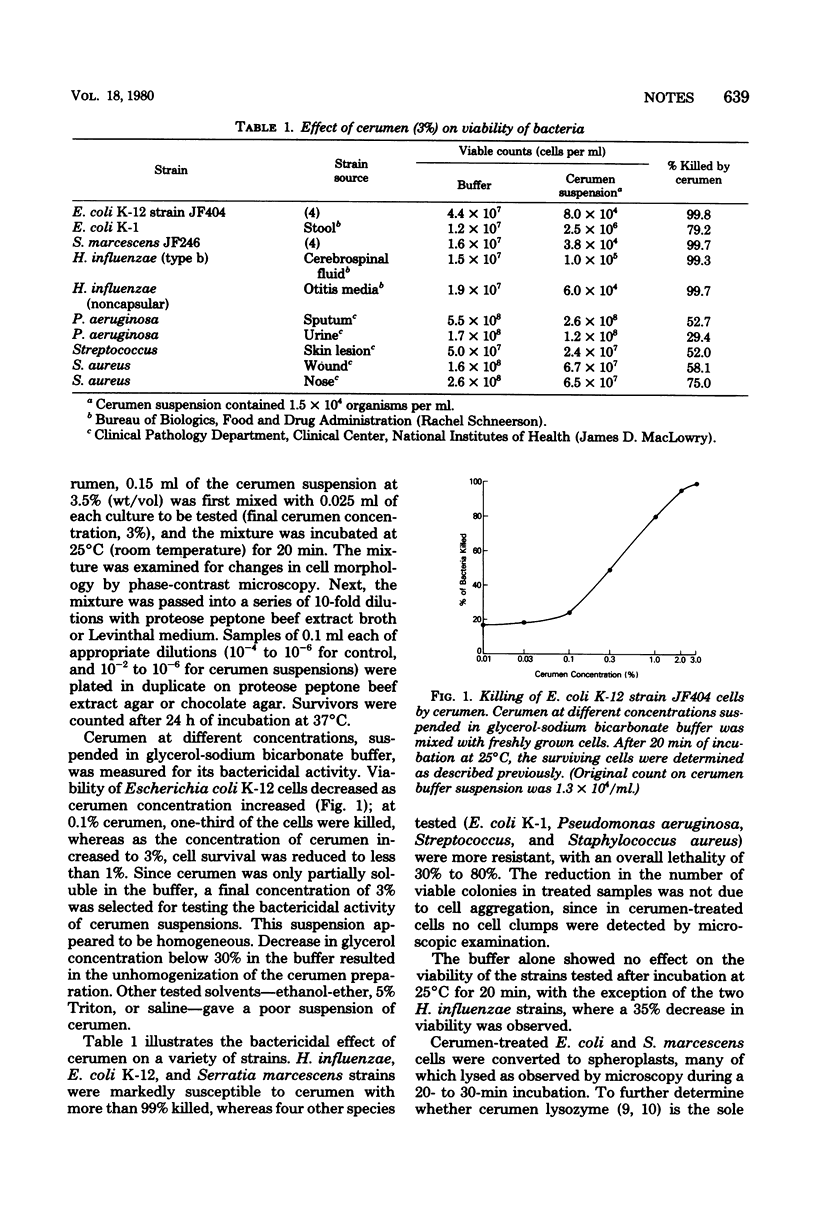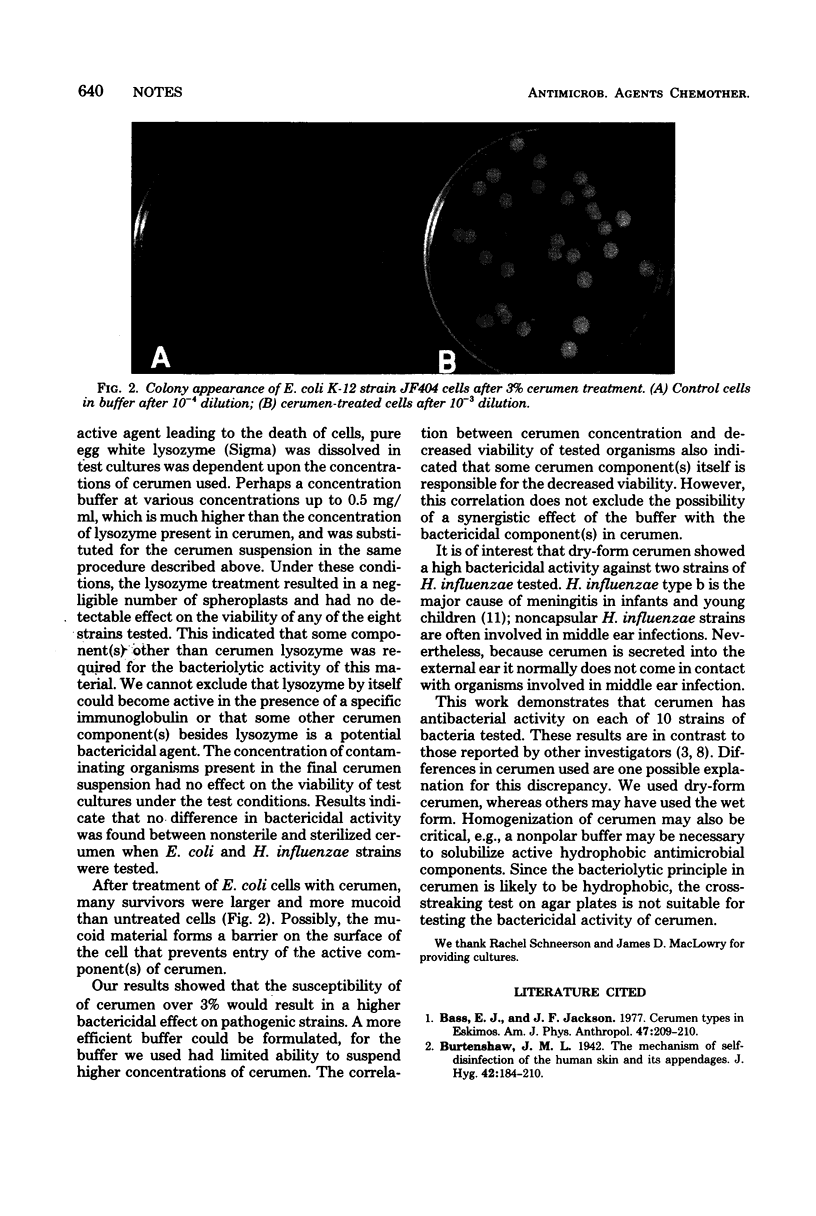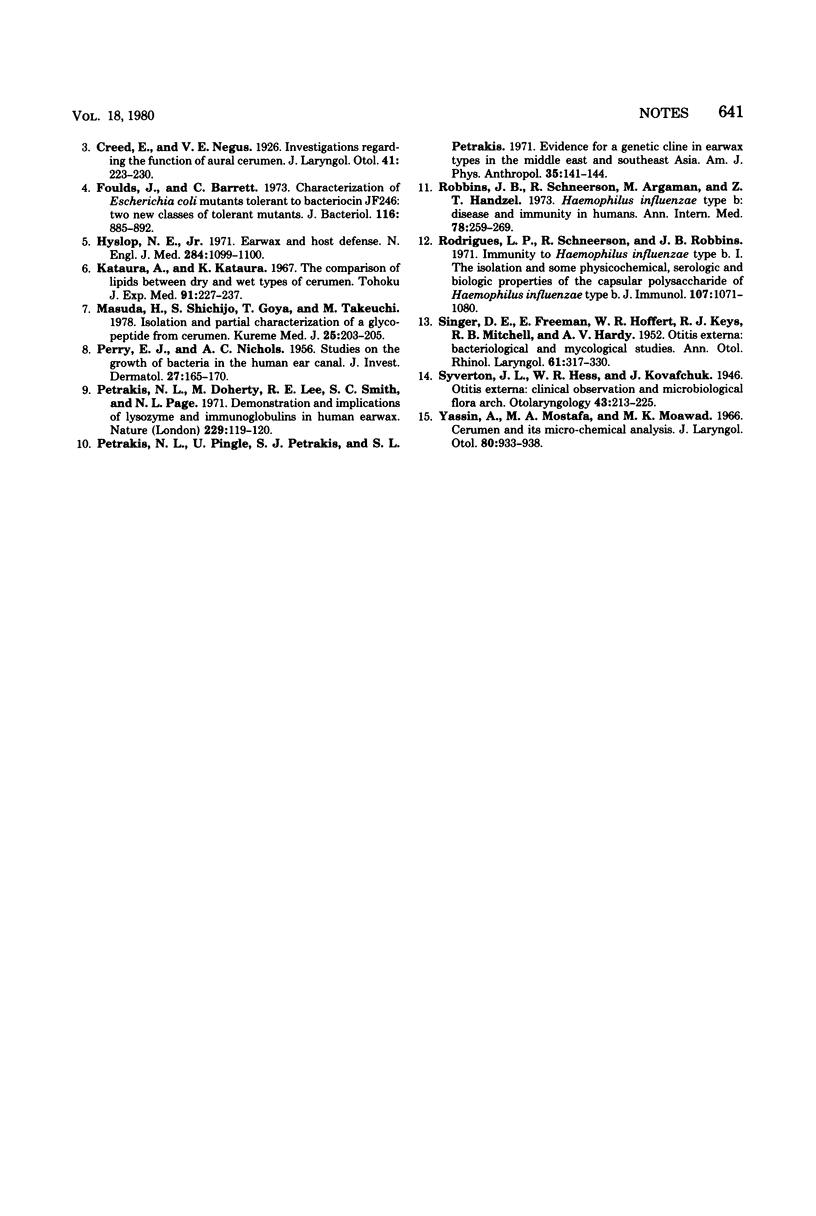Abstract
Freshly collected cerumen (dry form) suspended at a concentration of 3% in glycerol-sodium bicarbonate buffer showed bactericidal activity against some strains of bacteria tested. This suspension reduced the viability of Haemophilus influenzae, Escherichia coli K-12, and Serratia marcescens by more than 99%, whereas the viability of two Pseudomonas aeruginosa isolates, E. coli K-1, Streptococcus, and two Staphylococcus aureus isolates of human origin was reduced by 30 to 80%. The results support the hypothesis that cerumen functions to kill certain foreign organisms which enter the ear canal.
Full text
PDF



Images in this article
Selected References
These references are in PubMed. This may not be the complete list of references from this article.
- Bass E. J., Jackson J. F. Cerumen types in Eskimos. Am J Phys Anthropol. 1977 Sep;47(2):209–210. doi: 10.1002/ajpa.1330470203. [DOI] [PubMed] [Google Scholar]
- Foulds J., Barrett C. Characterization of Escherichia coli mutants tolerant to bacteriocin JF246: two new classes of tolerant mutants. J Bacteriol. 1973 Nov;116(2):885–892. doi: 10.1128/jb.116.2.885-892.1973. [DOI] [PMC free article] [PubMed] [Google Scholar]
- Haemophilus influenzae type b: disease and immunity in humans. Ann Intern Med. 1973 Feb;78(2):259–269. doi: 10.7326/0003-4819-78-2-259. [DOI] [PubMed] [Google Scholar]
- Hyslop N. E., Jr Ear wax and host defense. N Engl J Med. 1971 May 13;284(19):1099–1100. doi: 10.1056/NEJM197105132841913. [DOI] [PubMed] [Google Scholar]
- Kataura A., Kataura K. The comparison of lipids between dry and wet types of cerumen. Tohoku J Exp Med. 1967 Mar;91(3):227–237. doi: 10.1620/tjem.91.227. [DOI] [PubMed] [Google Scholar]
- NICHOLS A. C., PERRY E. T. Studies on the growth of bacteria in the human ear canal. J Invest Dermatol. 1956 Sep;27(3):165–170. doi: 10.1038/jid.1956.89. [DOI] [PubMed] [Google Scholar]
- Petrakis N. L., Doherty M., Lee R. E., Smith S. C., Page N. L. Demonstration and implications of lysozyme and immunoglobulins in human ear wax. Nature. 1971 Jan 8;229(5280):119–120. doi: 10.1038/229119a0. [DOI] [PubMed] [Google Scholar]
- Petrakis N. L., Pingle U., Petrakis S. J., Petrakis S. L. Evidence for a genetic cline in earwax types in the Middle East and Southeast Asia. Am J Phys Anthropol. 1971 Jul;35(1):141–144. doi: 10.1002/ajpa.1330350117. [DOI] [PubMed] [Google Scholar]
- Rodrigues L. P., Schneerson R., Robbins J. B. Immunity to Hemophilus influenzae type b. I. The isolation, and some physicochemical, serologic and biologic properties of the capsular polysaccharide of Hemophilus influenzae type b. J Immunol. 1971 Oct;107(4):1071–1080. [PubMed] [Google Scholar]
- SINGER D. E., FREEMAN E., HOFFERT W. R., KEYS R. J., MITCHELL R. B., HARDY A. V. Otitis externa; bacteriological and mycological studies. Ann Otol Rhinol Laryngol. 1952 Jun;61(2):317–330. doi: 10.1177/000348945206100201. [DOI] [PubMed] [Google Scholar]
- Yassin A., Mostafa M. A., Moawad M. K. Cerumen and its micro-chemical analysis. J Laryngol Otol. 1966 Sep;80(9):933–938. doi: 10.1017/s0022215100066196. [DOI] [PubMed] [Google Scholar]



